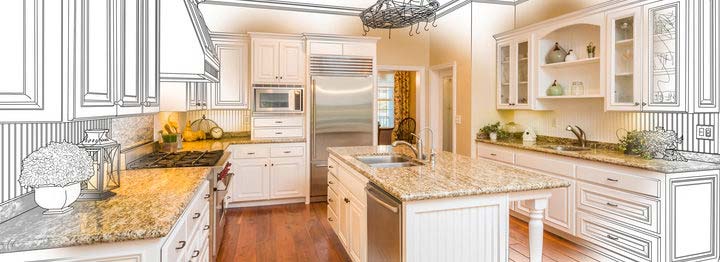
Now that the economy has recovered and the housing market has returned to levels that it achieved in the months leading up to the last recession, we’re seeing a lot of people investing more money into their home.
Renovations are big, but additions are also becoming popular in many neighborhoods and markets. If you’re thinking about adding onto your home, here are six essentials you need to know before you proceed.
A home addition isn’t something you want to rush into. Though you might be anxious to get started, this isn’t a reality television show where everything will occur within a precise 30-minute (or 30-day!) window.
It’s going to take months for the process to unfold from start to finish. Try to remain patient and make sure you’re aware of the following:
When it comes to a home addition, you have two basic options: build out or build up.
Building out is what you do when you add a room at ground level. This increases the footprint of your home by expanding into your yard or driveway, either on the back or side.
The positives of building out are that it’s typically cheaper than building up and often looks more natural. The potential negatives are that you’re reducing the size of your yard and will have to pour new foundation.
Building up involves either adding to the second story or creating a new story altogether. This is generally more expensive, but it avoids the drawback of eating up valuable land.
Don’t go into a home addition assuming it’s going to be cheap. While renovations can be done on a very tight budget, any time new construction is involved, you’re going to pay a premium.
The good news is that you’ll probably recoup much of this cost on the back end (assuming it’s well designed). Just how much will it cost you? This depends on numerous factors, but there are some rules of thumb you can use to guide your estimates.
“For general ballparking, I would guess somewhere between $200 to $600 per square foot,” says Bill Millholland, executive vice president of a D.C.-based design company. “The size of the space also plays a huge role in the cost. The more you build, the less it costs per square foot.”
The worst mistake you can make when adding onto your home is just to find a builder and get the process rolling. The builder may be able to build an addition that’s structurally sound and up to code, but he or she probably doesn’t know much about local home values, HOA rules, and architecture.
Before you talk with a builder, it’s better to meet with an architect and walk through some basic designs that will work well with your existing structure. The last thing you want is to build an addition that sticks out like a sore thumb.
Next, consult with your HOA (if applicable) to make sure there aren’t any problems with the addition. Finally, meet with an experienced real estate agent to get that expert’s opinion on how much value you can get out of the addition.
Though you’ll probably spend more on the addition than it’ll add in value to your home, you need to make sure the financials aren’t totally lopsided.
Once you’ve consulted with the professionals cited in the previous section, you can turn your attention to the contractor. This is a critical step in the process: You don’t want to get caught working with the wrong individual.
Always get multiple bids when you do any sort of home project. Not only are you likely to receive a wide range of quotes, but you could also get unique ideas and different personalities.
It will be tempting to go with the lowest price, but don’t automatically gravitate toward what’s cheapest. Too often, you pay for what you get.
Look at other factors and make a decision based on the full picture. At the end of the day, trust your gut and choose the contractor you feel most comfortable with.
A lot of homeowners go into the addition process with a poor understanding of what it looks like. Don’t expect it to be neat, clean, and easy.
“The analogy we use is that it can be like camping out. Depending on the project, you’re going to be inconvenienced, but you really shouldn’t have to suffer,” Millholland says. “A professional firm will do everything practical to control dust and limit the disruption to your routine.”
Everything will get back to normal, but be aware that your normal routine will have to be disrupted at least a little. If you have friends or family you can stay with during some of the work, that’s probably not a bad idea.
The estimate the builder gives you for the addition will cover the majority of the cost, but there will always be added expenses. Failing to account for these could leave you feeling frustrated at the end of the day. It’s best to calculate them into your budget.
“You’ll generally have to pay a disposal service for cleanup and removal of old or excess materials,” SFGate notes. “Understand that an addition to your home will very likely also cause your home insurance, utility bills and property taxes to increase, as well.”
Nobody knows the Katy, Texas real estate market quite like Green Residential. We’ve been in business in the area for more than three decades, so we know exactly what it takes to maximize value in the current market and this region.
When it comes time to sell your home, don’t waste money with a traditional Houston realty company. You’ll end up overpaying in commissions, which will limit the equity you’re able to pull out.
Instead, work with our knowledgeable agents at Green Residential. We’re the leading flat-fee agency in Houston, and could save you thousands of dollars. Please feel free to reach out to us today for more information!
